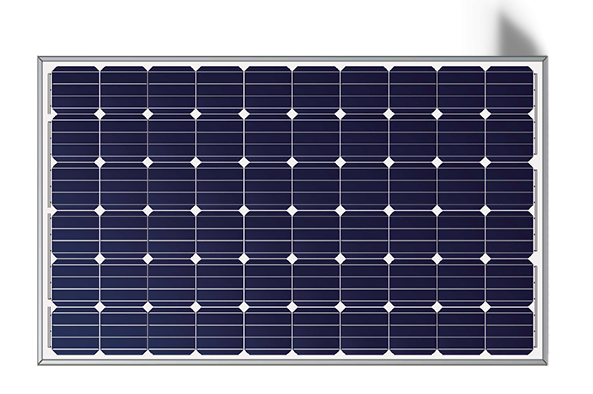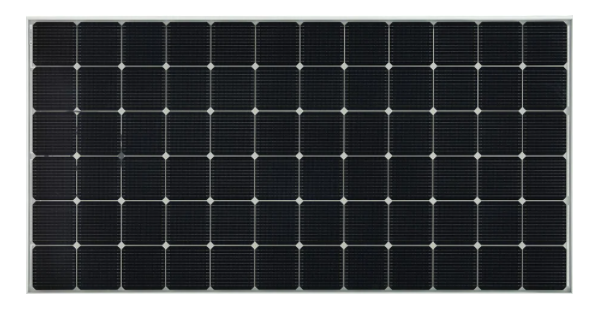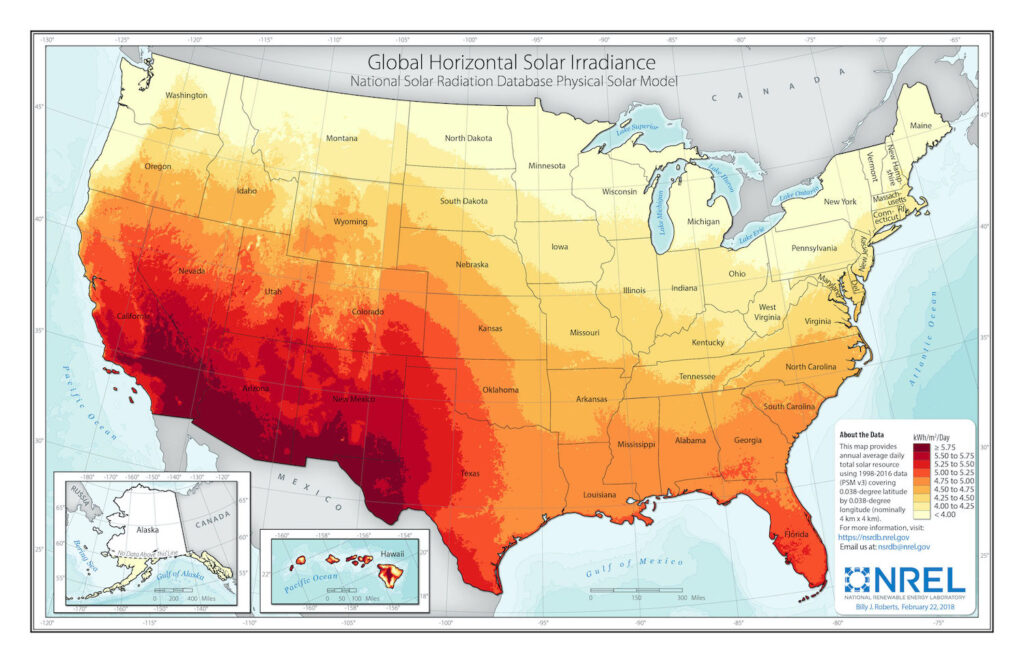When you are looking for answers on solar panel size there are three different elements of size to consider:
- The number of solar cells in a solar panel
- The physical dimensions of the panel
- The rated power of the panel
If you’re trying to determine how many panels will fit on your roof, you will want to know the physical dimensions of the solar panels. If you’re sizing a solar panel to charge a 12 volt battery, you will be more interested in the number of cells and rated power.
We will provide you with information on all three elements of panel size so you’re ready for any situation! Let’s start with how many solar cells are in a solar panel.
Number of Solar Cells In a Solar Panel
Solar cells are the building blocks of a solar panel. The size of a solar cell is about 6” x 6”. When sunlight hits one of these solar cells it interacts with semiconductor materials and causes electrons to come free and produce an electric current. To form a solar panel many of these cells are connected together to increase their power.
So how many of these solar cells are in each solar panel? Like with most solar power questions, the answer is never as simple as it should be! We’ll make this as simple as possible, however:
- A residential rooftop solar panel has 60 solar cells
- A commercial rooftop solar panel has 72 solar cells
- Portable solar panels have more wide-ranging solar cell counts
So, there will likely be 60 solar cells in any solar panel you put on your roof as part of a residential solar panel installation.
Physical Dimensions of a Solar Panel
Sometimes ‘solar panel size’ simply refers to the height, width, and depth of a solar module. The physical dimensions of a solar panel are similar to the number of solar cells in a panel in that it differs between residential, commercial, and portable solar panels.
As we mentioned earlier, a residential solar panel contains 60 solar cells that are each around 6” x 6”. These cells are arranged in a grid of 10 cells long by 6 cells wide. There are also a few additional inches due to the panel frame. The dimensions of a residential solar panel are 65” x 39” or about 5½ feet long by 3¼ feet wide. The depth of the panel is about 1½”.

A commercial solar panel consists of 72 solar panels. These cells are arranged in a grid of 12 cells long by 6 cells wide. This makes these panels the same width as a residential solar panel but two solar cells longer. The dimensions of a commercial solar panel are 77” x 39” or about 6½ feet long by 3¼ feet wide. The depth of the panel is about 1½”.

Smaller portable panels do not have a standardized size. You can find 1 watt solar panels that are 11” x 9” and 85 watt panels that are 47” x 21” (and many other sizes too!). You will have to check the solar panel info available to know the solar panel size of the panel you are interested in.
Now that you know the size of a solar panel, perhaps you’re wondering ‘How much does a solar panel weigh?’. A residential solar panel weighs about 40 pounds and commercial solar panels can weigh closer to 50 pounds.
Rated Power of a Solar Panel (Wattage)
When it comes to the power provided by a solar panel, finding the right solar panel size should be simple. After all, you just need to know how much power you need so you can buy that size of panel, right?
Although in theory that is how things should work, in practice we need to consider a few more things before we can be confident in our solar panel sizing. The first thing we need to consider is what solar panel power actually means.
When we talk about solar panel size with regard to power, we are referring to the nameplate DC power rating of the solar module. This tells you how much power the panel can produce under standard test conditions (STC). For example, a 100 Watt solar panel will produce 100 Watts of DC power under specific factory conditions.
If you’re considering a solar panel as part of a rooftop solar installation, it will probably be rated somewhere between 250 watts and 400 watts. If you’re looking for a portable solar panel to charge your devices, it will probably be in the range of 15 watts to 60 watts.
So we know that solar panel size with regard to power refers to how many watts our solar panel is rated for. Now how do we figure out how much power that panel will actually produce? First we need to find out how much sunshine we get.
Peak Sun Hours and Solar Panel Power
A peak sun hour is not just an hour that the sun is out. It actually refers to an hour in which the intensity of sunlight (solar irradiance) averages 1,000 watts per square meter. In other words:
1 peak sun hour = 1000 W/m² of sunlight per hour
How do you find out how many peak sunlight hours you get in your location? If you live in the United States, the following map will tell you how much sun you should expect:
Let’s say you’re one of the folks that get 4 peak sun hours per day. If you have a 300 watt solar panel you would multiply that 300 watt nameplate DC power rating by those 4 hours to get 1200. This means that the solar panel should be producing 1200 watt hours per day. If we divide this by 1000 we get 1.2 kilowatt hours per day.
Solar Installation Size
Of course you might be interested in sizing more than just a solar panel. You may be considering an installation of solar panels on the rooftop of your home or business. In this case you will want to know how to size an entire solar array (a series of solar panels linked together).
Fortunately, sizing a solar installation has many similarities with sizing a solar panel. The first thing you will want to do in this case, however, is to find out how much electricity you are consuming. This information can usually be found in kilowatt hours (kWh) on your electric bill.
For example, let’s say you use 893 kWh per month (this was the average monthly electricity consumption for a U.S. residence in 2020). The following calculation would let us know the size a solar array we would need to cover this electricity usage:
- Divide our average monthly usage by 30 to get our average daily usage:
893 / 30 = 29.7 kWh
- Find out how many peak sun hours your location receives (we’ll still assume 4 hours):
4 peak sun hours
- Divide your daily kWh needs by your peak sun hours to get your required system size:
29.7 kWh / 4 = 7.4 kW
Therefore, you would need a solar system size of 7.4 kilowatts (kW) to cover your electricity needs. If you were using 300 watt solar panels to build your system, you would divide the system size by 300 to find out how many solar panels you would need:
- 7.4 kW (7400 watts) / 300 watts = 24.6
So you would need 25 solar panels to cover your electricity needs!
Wrapping Things Up
Whether it’s the number of solar cells, the physical dimensions, or the rated power you’re interested in, this information should give you a better understanding of solar panel size.
Hopefully you also have a better idea of the solar installation size that would work for you. If you need additional details, a qualified solar installer will be able to provide an assessment that takes into account the specifics of your location.
In the meantime, feel free to check out our information on the following solar panel size options:

